John C. Moore
Term 1859-1861
John C. Moore served as the 1st provisional Mayor of Denver from 1859 to 1861. During this time, the City of Denver was still considered a part of the Jefferson Territory, the unincorporated land bearing the name of our third President, Thomas Jefferson. The city owes its name to the former Kansas Territorial Governor, James W. Denver. During these gold rush years, the Moore Administration managed to maintain order, decrease mob violence and improve the physical infrastructure of the city, including building bridges.
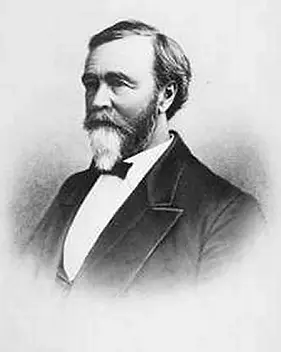
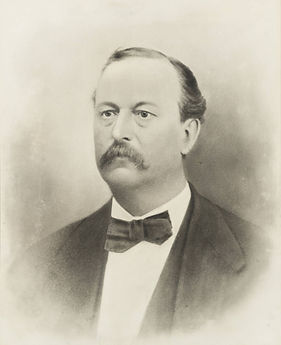
Mayor Charles Cook
Term 1861-1863
Charles Cook became the 2nd Mayor of the City of Denver in 1861, but the first elected Mayor of Denver in the recently formed Colorado Territory. Mayor Cook served for two successful terms, during which Denver’s population slowly increased. A popular banker and businessman of the times, he would later go on to found the First National Bank of Denver. He was never married.
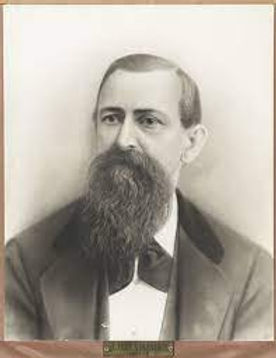
Mayor Hiram J. Brendlinger
Term 1864-1865
Mayor Brendlinger, the 4th Mayor of Denver, serving from 1864-1865, married Ms. Emma Brower in 1867 in New York, after completion of his Mayoral term. He was not married during his term.
Mayor Amos Steck
Term 1863-1864
Amos Steck served as the 3rd Mayor of Denver. From Postmaster to School Board President to State Legislator to Mayor, Amos Steck was a true public servant. Coming to Colorado during the “Pikes Peak or Bust” gold rush from Pennsylvania, he served the Denver community as Mayor from 1863 to 1864. During his Administration, plans for Denver’s railroad networks were put into place, disputes arose between settlers and native peoples and Denver also experienced a horrific fire that turned much of downtown into ash. Mayor Steck held his community together during these tumultuous times, and later went on to become a Colorado Chief Justice, delegate to the Republican National Convention and founder of the University of Denver, the oldest university in the state.
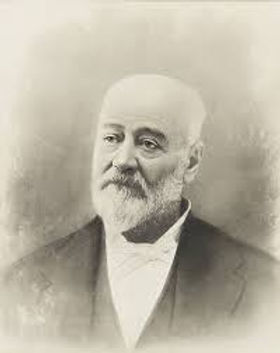
Mayor George T. Clark
Term 1865-1866
Having served as the 5th Mayor of Denver, George Clark became the Mayor of Denver in 1865 for one term. Before stepping into the role of Mayor, Clark also served the community as a local and state elected official, as well as a delegate to the 1880 Republican National Convention. Mayor Clark was also the first person in Denver to own a piano.


Mayor Milton DeLano
Term 1866-1868
An active politician, during Milton DeLano's Administration in 1867, the City of Denver became the territorial capital of Colorado while he was the 6th Mayor of Denver.
Mayor George D. Begole
Term 1931–1935
A graduate of the Denver Public School system, George D. Begole was elected as the 34th Mayor of Denver in 1931. Having served successfully for ten years as city auditor, Begole was popular among the people for his knowledge of the economy and his disdain for wasteful government spending. His election was shrouded with conspiracy, as he won by only a slim margin. He managed to regain control of the city, leading the charge through the tough economic times of the Great Depression. During his last year in office in a dramatic display, Mayor Begole stole a police car that was left open and running. He did this to illustrate the lack of economic awareness in the city’s Administration. Begole did not seek a second term in office and returned to business in the private sector.
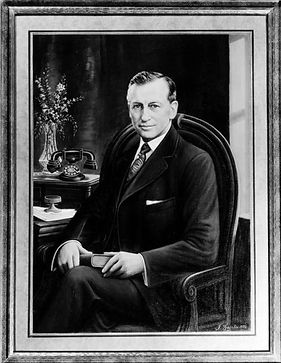
Mayor William M. Clayton
Term 1868-1869
William Clayton was an American Politician born on April 24th,1824 in Philidelphia, PA and died in 1892. He served as the 7th Mayor of Denver.
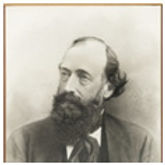

Mayor Baxter B. Stiles
Term 1869-1871 | 1877-1878
Baxter Stiles served as the 8th Mayor of Denver. He was born on June 26th, 1825 in Tunbridge, Orange County, Vermont. He died on September 30th, 1889 (Age 64) and now resides peacefully at Riverside Cemetary in Denver, Colorado. He was Mayor of Denver, Colorado for two terms, from 1869 to 1871 and again from 1877 to 1878.
Mayor John Harper
Term 1871-1872
John Harper served as the 9th Mayor of Denver. He was born on March 8th, 1825 in Glasgow, UK, and died on December 31st, 1874 in Denver, Colorado. He was also the owner of a hardware store.

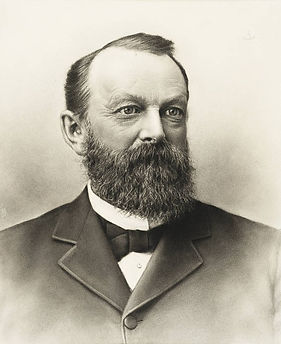
Mayor Joseph E. Bates
Term 1872-1873 | 1885-1887
Joseph E. Bates served as the 10th and 18th Mayor of Denver. His Administration marks the turning point for a then-emerging city. Originally from the East Coast and connected with such names as the Denver Brewery, Denver Pacific Railroad, and Denver Smelting and Refining Works, Mayor Bates brought a new image to the office. Denver’s growth in the following years steadily increased.
Mayor Francis M. Case
Term 1873-1874
Mayor Francis M. Case, the 11th Mayor of Denver. Mayor Case was married to Clara Case who passed away in 1871, two years before his Mayoral term began. He later married Sarah. T. Case after his Mayoral term ended. He was not married during his term.


Mayor William J. Barker
Term 1874-1876
William J. Barker served as the 12th Mayor of Denver. He was born on December 23rd, 1831, and died on March 27th, 1900 (aged 68) in Manhatten, New York. He now peacefully resides in Fairmont Cemetary in Denver, Colorado. He was a Colorado pioneer that moved to Denver in 1860 and owned a large amount of property in the city.

Mayor Richard Sopris
Term 1878–1881
A dedicated politician, Richard Sopris served the City of Denver as the 15th Mayor. During his time in office, the growing city reached a population of 35,628 people, according to the 1880 census.
Mayor Richard G. Buckingham (Dr.)
Term 1876-1877
Richard Buckingham served as the 13th Mayor of Denver. He was born on September 4th, 1816 in Troy, Rensselaer, New York. He earned the title "Dr." as a Physician and e was one of the founders of the Denver Medical Association in 1871. Buckingham enlisted in the 4th Virginia Cavalry on September 1861; his unit participated in various battles at Williamsburg, Manassas, Fredericksburg, and the Shenandoah Valley. Upon surrender in April 1865, only 20 of the original 450 members were present. He now peacefully resides in Riverside Cemetery in Denver, Colorado.
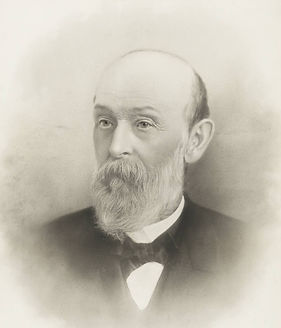
Mayor Robert Morris
Term 1881–1883
Robert Morris sered as the 16th Mayor of Denver. He was born on July 15th, 1838 in Athlone, North-West, Ireland. He died on June 24th, 1917 in Denver, Colorado (Age 78).
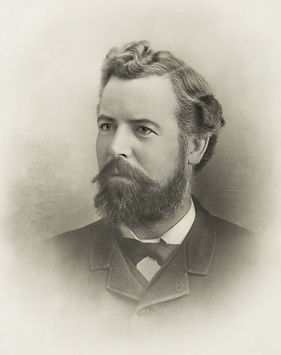

Mayor John Long Routt
Term 1883-1885
A U.S. Republican political figure and originally from Kentucky, John Long Routt served as the 1st Governor of Colorado before becoming the 17th Mayor of Denver in 1883 and serving until 1885. He dedicated his life to public service and held numerous offices throughout the state, attempting to cub the ever-rampant lawlessness and corruption of the time. After unsuccessfully running for the United States Senate, Routt ran successfully for the governorship again in 1891, and served as Colorado's 7th Governor until 1897.
Mayor William Scott Lee
Term 1887-1889
William Scott Lee served as the 19th Mayor of Denver. He was born in 1851 and died in 1916 (Age 65).
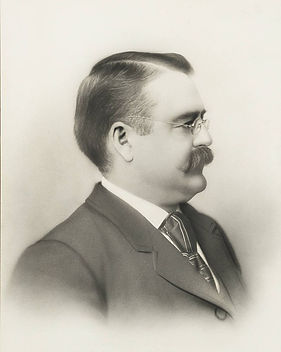

Mayor Wolfe Londoner
Term 1889–1891
In 1889, Wolfe Londoner was elected as the 20th Mayor to serve the Denver community. Under his direction, Denver’s population surged. The once fledgling settlement with only around 5,000 inhabitants, became the budding city of Denver which was now well over 100,000 residents. By 1890, Denver had become the second most populous city west of Omaha.
Mayor Platt Rogers
Term 1891-1893
Dedicated to serving the Denver community, Platt Rogers took office as Denver’s 21st Mayor in 1891. He did much to curb the lawlessness and crime that ran rampant across the young state. Though in 1893, when the Sherman Silver Purchase Act was repealed, Denver rapidly sunk into depression. The response was to diversify economic interests to include agriculture and food processing. Farms, ranches and factories sprouted up everywhere. These, in conjunction with the networks of railroads, pulled Denver back to its feet, economically.
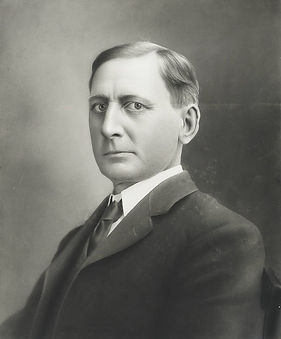

Mayor Marion DeKalb VanHorn
Term 1893-1895
An active politician, M. D. VanHorn served the City of Denver as the 22nd Mayor. While Mayor VanHorn was in office, Denver’s rapid growth stood stagnant, as the Silver Depression of 1893 set in and the city attempted to regain its ground.
Mayor Thomas S. McMurry
Term 1895-1899
Serving his Denver community, Thomas S. McMurry was elected as the 23rd Mayor in 1895. He continued to serve for four terms, as he steered the city through tough times, with effects of the Silver Depression of 1893 still lingering. Mayor McMurry contributed greatly to the economic and societal reconstruction of Denver, as the city slowly began to return to normal.


Mayor Henry V. Johnson
Term 1899-1901
Originally from Kentucky, Democrat Henry V. Johnson served the City of Denver as the 24th Mayor. Having been raised in a very politically active family, Mayor Johnson knew the importance of public service. A lawyer by trade, he had already held the position of U.S. District Attorney for Colorado, as well as serving in his native Kentucky.Mayor Sharpley was married to Kate Lennon Sharpley, who was originally from Missouri. She moved to Denver at a young age and even attended Denver Public Schools. She passed away in 1910, before Mayor Sharpley was elected in 1915. They had two daughters. There is no record of Mayor Sharpley remarrying after the death of his wife. The family residence was at 1321 E. 3rd Avenue.
Mayor Robert R. Wright
Term 1901-1904
A dedicated politician, Robert R. Wright served the City of Denver as the 25th Mayor for four terms In 1903, a Denver city land dispute went to the U.S. Supreme Court, bearing the name of Mayor Wright. He won the lawsuit and allocated the land to be used for a cemetery.
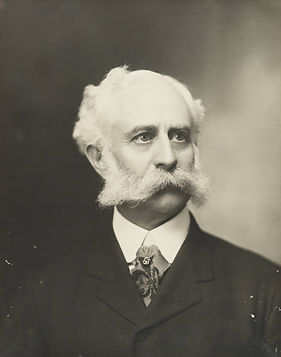

Mayor Robert W. Speer
Term 1904-1912 | 1916–1918
Robert Speer served as the 26th and 30th Mayor of Denver. Mayor Speer was dedicated to improving the quality of life in Denver. He established the City Beautiful programs that have created and preserved some of the city’s most prized landmarks, including the tree-lined Cherry Creek and Civic Center Park. In 1908, Denver, nicknamed the “Queen City of the Plains”, hosted the Democratic National Convention in what is today’s Denver Performing Arts Complex.
Mayor Henry J. Arnold
Term 1912–1913
Running as the reform candidate, Henry J. Arnold defeated the Speer-Evans ticket in 1912 to become the 27th Mayor of the city of Denver. Much controversy and hype surrounded this forward-thinking Mayor, as he served as a popular whistleblower of the time. Advocating for increased transparency to thwart corruption, Mayor Arnold quickly became a favorite of the people.

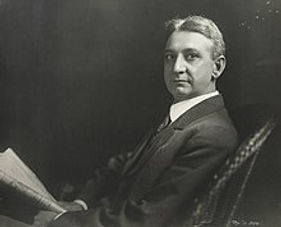
Mayor James McDaniel Perkins
Term 1913-1918
J.M. Perkins of Missouri was elected the 28th Mayor of the City of Denver in 1913 and served his community for two years. A doctor by profession, member of the American Medical Association, a Freemason, and active in the Baptist church, Mayor Perkins was in office when Denver was hit with the greatest amount of snowfall ever from one storm. A record 45.7 inches fell December 1st–6th in 1913.
Mayor William Sharpley
Term 1915-1916
Honorable William Sharpley was the 29th Mayor of Denver, serving from 1915 to 1916. He was married to Kate Lennon Sharpley, who was originally from Missouri. She moved to Denver at a young age and even attended Denver Public Schools. She passed away in 1910, before Mayor Sharpley was elected in 1915. They had two daughters. There is no record of Mayor Sharpley remarrying after the death of his wife. The family residence was at 1321 E. 3rd Avenue.
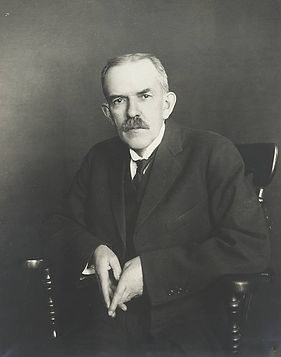

Mayor William Fitz Randolph Mills
Term 1918-1919
Present and active during the 1908 Democratic National Convention held in Denver, W. F. R. Mills would become the 31st Mayor of Denver just a decade later and serve until 1919. Originally from New York and a member of both the Freemasons and the Knights Templar, Mills was the president of the City Elite Laundry Company and a Universalist. His 1886 Victorian home at 3825 W. 32nd Avenue in Denver would later become a city landmark, for its architectural and historic significance.
Mayor Dewey C. Bailey
Term 1919-1923
An active Republican politician running on the promise of bipartisanship, Dewey C. Bailey was elected as the 32nd Mayor of the City of Denver in 1919. During his time in office, gang activity dominated the spotlight as the infamous Bunko Gang was exposed and its members arrested. Mayor Bailey was also charged with the difficult task of enforcing Prohibition, after its 1919 ratification to the U.S. Constitution.
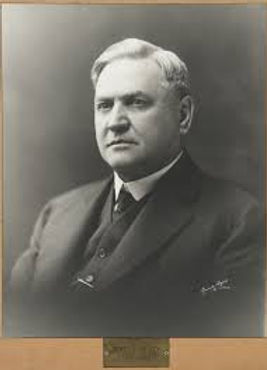

Mayor Benjamin F. Stapleton
Term 1923–1931 | 1935–1947
Kentucky native Benjamin F. Stapleton was first elected as the 33rd and 35th Mayor of Denver. A First Sergeant in the Spanish-American War and a lawyer by profession, Stapleton became active in politics, helping to found the Veterans of Foreign Wars. Having previously served as the police magistrate and the postmaster, Mayor Stapleton was credited with several civic improvements in and around Denver. In 1933, Stapleton was elected Colorado State Auditor.
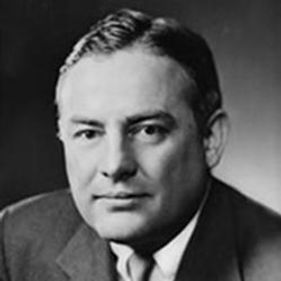
Mayor Quigg Newton
Term 1947–1955
An attorney and very successful businessman, Quigg Newton was elected as the 36th Mayor of Denver in 1947 and served for two terms. The grandson of a Colorado Territory pioneer and a World War II veteran, Newton is largely credited with the modernization of the Denver city government, due to his extensive knowledge of external funding resources. Additionally, Mayor Newton created the Mayor’s Committee on Human Relations in 1948. He would later become the president of the University of Colorado, after holding numerous public offices. Newton was also a member of the Republican National Committee, Kiwanis Club, the Denver Country Club, the Elks Club, and the Colorado Sons of the Revolution. Today, several buildings in and around Denver are named in Netwon’s honor.
Mayor Will Nicholson
Term 1955–1959
Elected to office in 1955, Will Nicholson served as the 37th Mayor of Denver. Mayor Nicholson’s dedication to improving the city’s infrastructure led to the assurance of an adequate water supply for Denver and a reform of the Career Service Authority. Prior to the enactment of federal legislation, Colorado and especially Mayor Nicholson also pioneered the campaign that prohibited housing discrimination.


Mayor Richard Batteron
Term 1959–1961
Businessman Richard Batterton was elected as the 38th Mayor of the City of Denver in 1959. Mayor Batterton opened the door to international partnerships with Japan, as he signed the Sister-City Proclamation in July of 1960. Denver and the Japanese city of Takayama would now be explicitly linked, as the proclamation called upon Denver to universally recognize this tie of peace and friendship. During his Administration, Mayor Batterton also devised an evacuation plan for Denver’s residents that required them to relocate to the mountains. Especially vexed by the funding cut for highways, the primary means of evacuation, he wrote President Eisenhower on August 17th, 1959 in protest. Today, his historic, architecturally significant home still sits in the Park Hill neighborhood.
Mayor Thomas Currigan
Term 1963–1968
Denver-native Thomas G. Currigan was elected as the 39th Mayor in 1963, after a successful eight years as the City Auditor. A dedicated public servant, Mayor Currigan served until 1968. In 1964, a national design competition selected Denver-based William C. Muchow Associates Architects to design a new convention center. The project was completed in 1969 and named after his grandfather, Martin D. Currigan. Under Mayor Currigan’s leadership, the Denver Police Department’s morale increased and the city saw a sharp decline in crime rates. Popular among the people, Mayor Currigan also headed a delegation to Japan. During his Administration, Denver saw great progress and economic improvement, earning the Mayor United Press International’s Colorado Man of the Year in 1968.

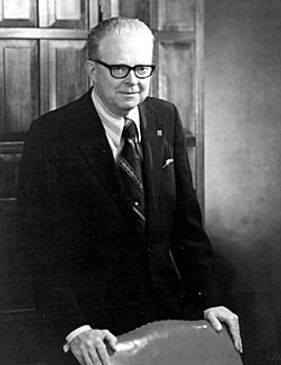
Mayor William H. McNichols
Term 1968–1983
Son of a former Denver City Auditor and brother of a former Governor of Colorado, William H. McNichols, Jr. continued the political line as he was elected as the 40th Mayor of Denver in 1968. He served the Denver community until 1983. As his predecessor witnessed, Mayor McNichols also enjoyed great economic prosperity during his Administration. By the 1970s, Denver was booming as a result of exporting Colorado oil to stimulate the sluggish economy. The suburbs sprawled, dotted with shopping malls and restaurants, eventually leading to the opening of the Denver Tech Center. Mayor Bill, as he liked to be called, was Denver’s second-longest serving Mayor. He made significant strides with the water supply, building parks, swimming pools and recreation centers, and expanding the Denver Art Museum and the former Mile High Stadium.
Mayor Federico Peña
Term 1983–1991
Denver’s first Latino mayor, Federico Peña, was sworn into office in 1983 as Denver's 41st Mayor. Originally from Texas and an attorney by trade, Peña had already served in the Colorado House of Representatives when he was elected Mayor. Under Mayor Peña’s direction, the city successfully weathered the financial troubles that resulted from the oil bust and other private sector failures. He found ways to reinvest in the city to spur economic growth, including the initiation of plans for the new Denver International Airport (DIA) and for a major league baseball team. The economy had rebounded by 1990 and the population swelled as new technical jobs attracted people from across the U.S. and abroad. Denver’s Tech Center hit the map as a technological hotspot of the nation, home to companies such as U.S. West, Qwest Communications, TCI, and EchoStar. Peña would later go on to serve as U.S. Secretary of Transportation and U.S. Secretary of Energy under President Clinton, and as Co-Chair of current President Barack Obama’s National Campaign. The popular Peña Boulevard, connecting Denver International Airport to Interstate 70, bears his name.
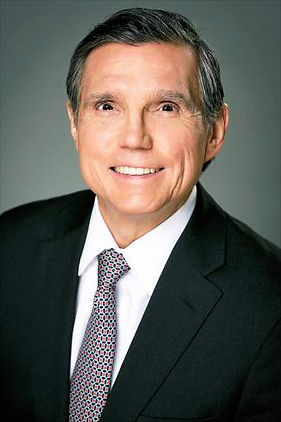
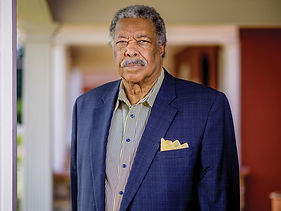
Mayor Wellington Webb
Term 1991–2003
Wellington Webb, elected in 1991 as the 42nd Mayor and the first African-American Mayor of Denver, spurred the revitalization of downtown, added more park space than any other mayor, completed 85 percent of Denver International Airport, and created the Denver Health Authority, which financially restructured Denver Health Medical Center. Additionally, he revamped the city's local small business, minority and women's business program into a national model, and oversaw the redevelopment of Lowry Air Force Base and Stapleton International Airport. He hosted World Youth Day and the Summit of the Eight, which brought the pope and world leaders to the city; and opened international trade offices in London and Shanghai. He accelerated the redevelopment of the Central Platte Valley, including building new parks, streets, the city's first skate park, and funding for Union Station. His bond proposals help pay for major renovations to art, cultural venues and libraries, including the opening of the Blair-Caldwell African American Research Library in historic Five Points. New sports facilities ← including Coors Field, The Pepsi Center and the new Mile High Stadium — were built downtown during his administration, and he negotiated 25-year leases for the Denver Nuggets, Colorado Avalanche and Denver Broncos. Prior to becoming the 42nd mayor, he was elected as Denver's Auditor and to the Colorado State Legislature. After leaving office, he was appointed by President Barack Obama as a delegate to the United Nations. The Wellington E. Webb Municipal Office Building, completed in 2002, was named in honor of this former Mayor.
Mayor John Hickenlooper
Term 2003–2011
Pennsylvania-native John Hickenlooper was elected as the 43rd Mayor of the City of Denver in 2003. Before taking office as Mayor, Hickenlooper was first catapulted onto the political scene by heading the charge to ensure that “Mile High” remained a part of the name of the new Bronco’s stadium. An entrepreneur by profession and Co-Founder of the Wynkoop Brewing Company, Mayor Hickenlooper supported a series of administrative reforms and rallied the urban renewal movement of Lower Downtown. Under his leadership, the budget crisis was confronted, sparking key infrastructural changes throughout the city. Mayor Hickenlooper is well-known for his “10 year plan to end homeless,” Denver’s legalization of marijuana and Greenprint Denver, his initiative to promote sustainable development and reduce citywide greenhouse gas emissions. Mayor Hickenlooper was instrumental in bringing the Democratic National Convention back to Denver in 2008, the 100th anniversary of this event’s first Denver appearance. Hickenlooper was elected Governor of Colorado in 2010, taking office in January of 2011.


Mayor Guillermo "Bill" Vidal
Term January 2011-July 2011
Bill Vidal became the 44th Mayor in January of 2011, after then-Mayor Hickenlooper assumed the Colorado Governor’s position. A career civil servant and Cuba native, Mayor Vidal held notable positions at the Colorado Department of Transportation and on the Denver Regional Council of Governments before becoming Mayor. During his tenure with Denver, Vidal oversaw the development of strategic public-private partnerships and numerous infrastructural improvements and reforms. Construction of Denver’s Colorado Convention Center’s expansion project and the expansion of the Denver Art Museum were both completed under his leadership. Mayor Vidal served until July 2011, when Mayor Michael B. Hancock was elected.
Mayor Michael Hancock
Term 2011–20
Michael B. Hancock became Denver, Colorado’s 45th mayor in July 2011 and immediately began to transform Denver into a more globally competitive city. With the fifth-busiest airport in the United States serving more than 53 million passengers annually, Mayor Hancock is leveraging Denver International Airport to make the entire region a gateway to the world.
Mayor Hancock has secured five new nonstop international flights, including Tokyo, Mexico City, Reykjavik and Panama City, bringing a combined $203M in economic benefits to the region. These routes are opening new connections between the Rocky Mountain West and Asia, Europe and Central America.

